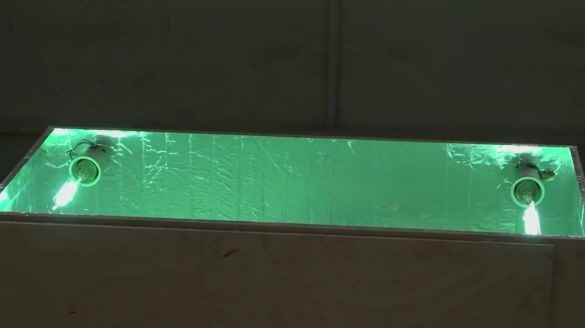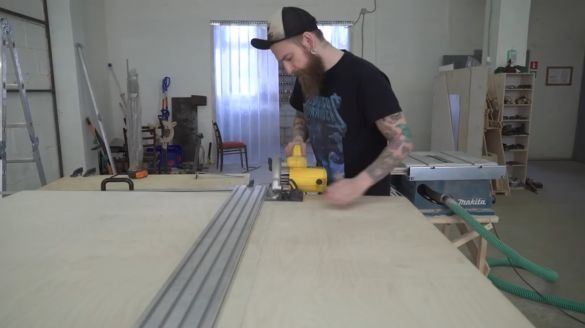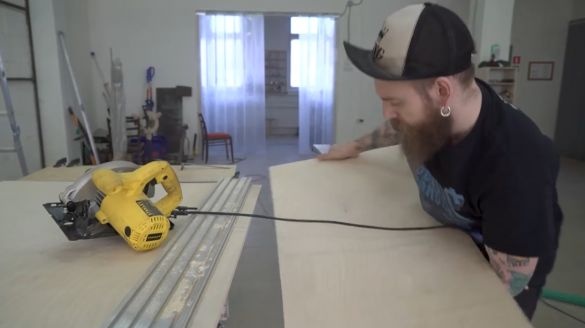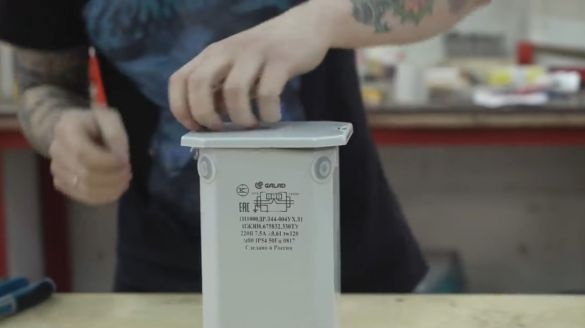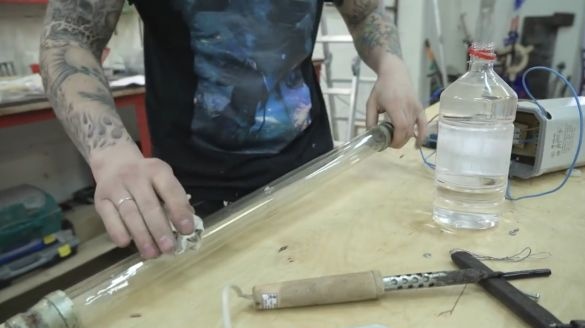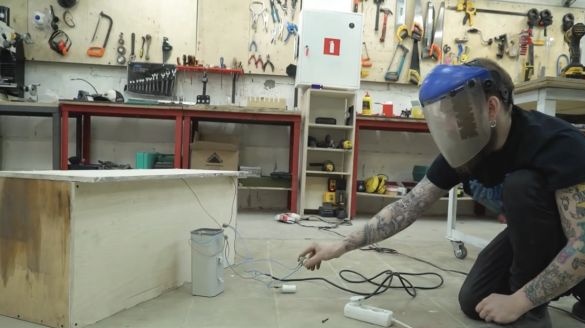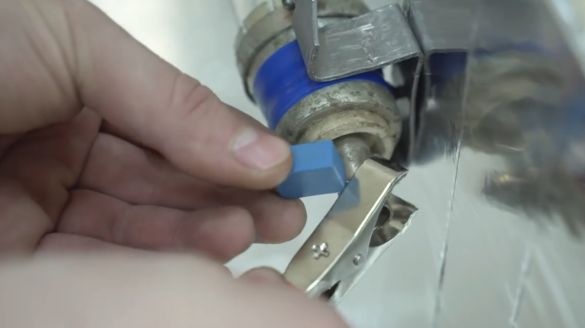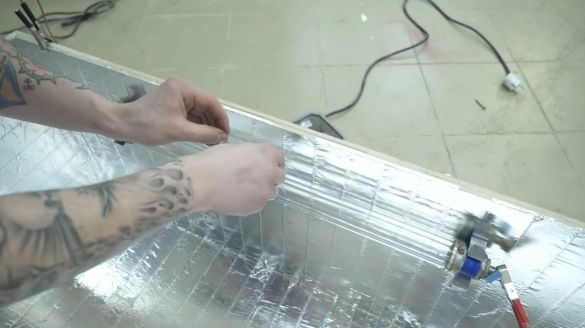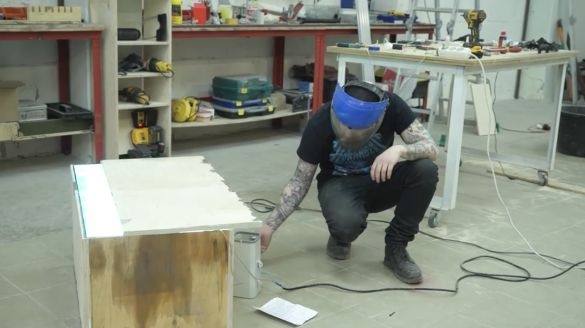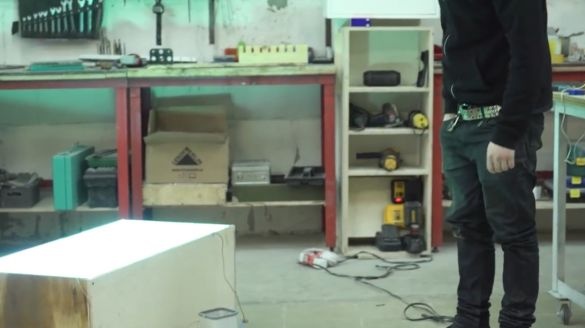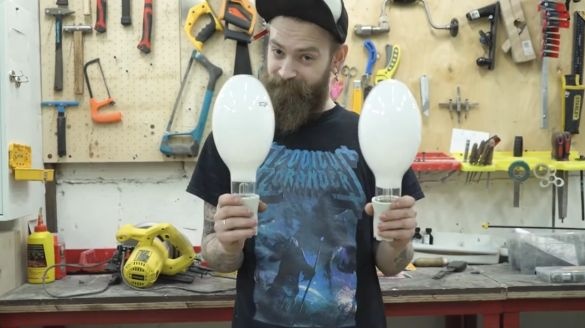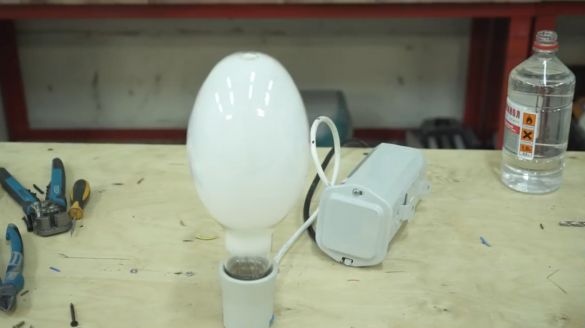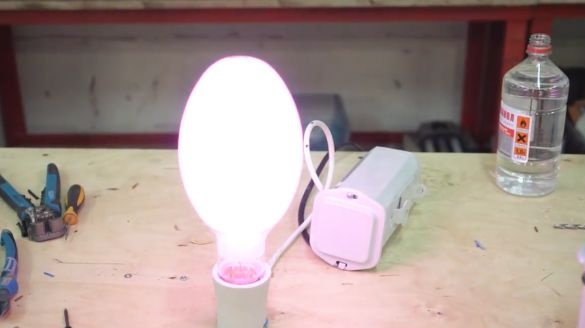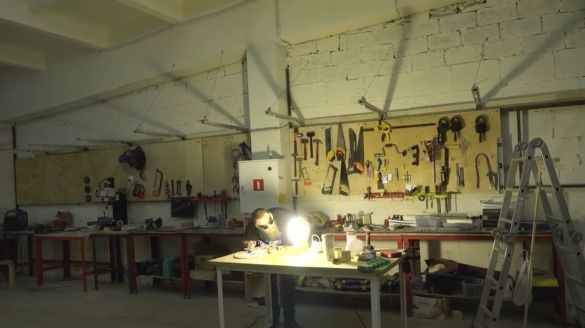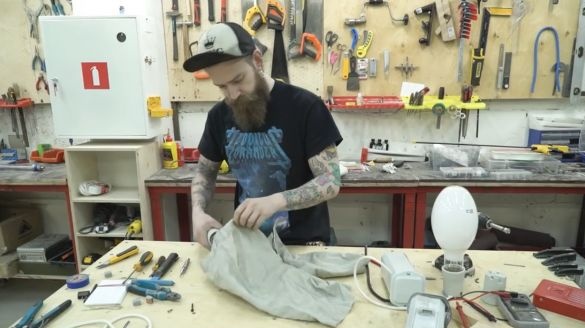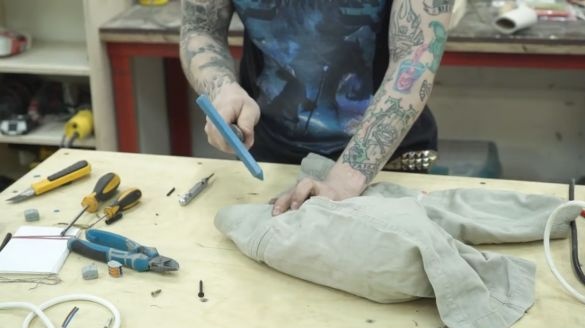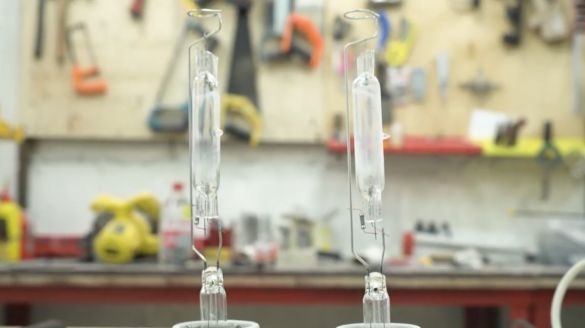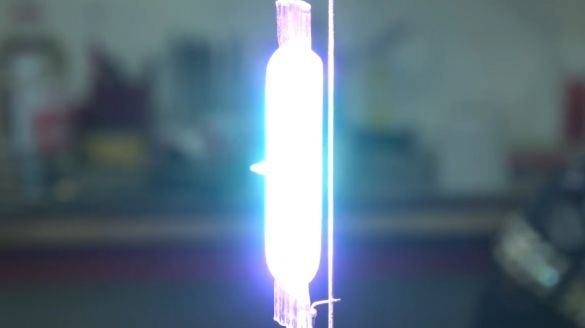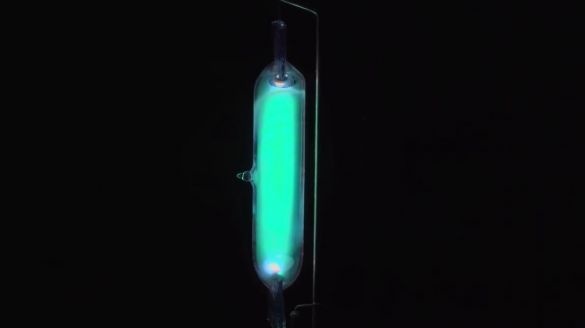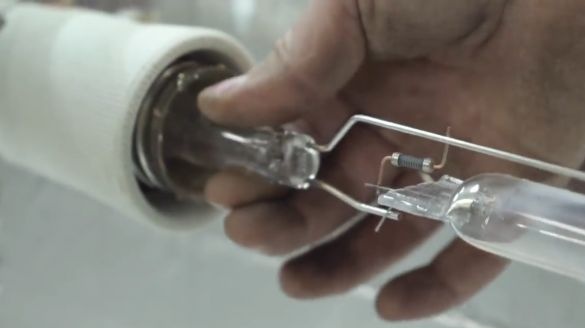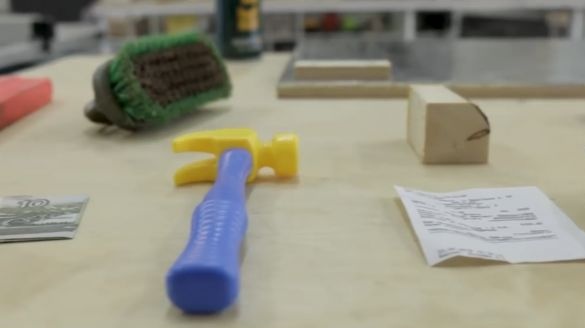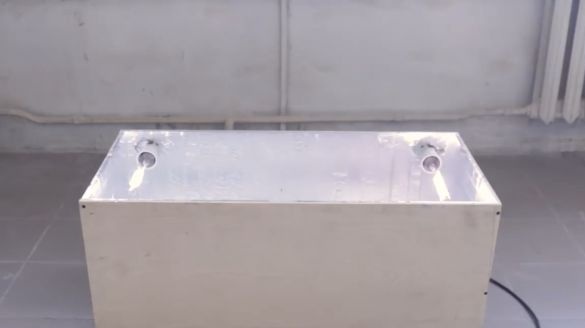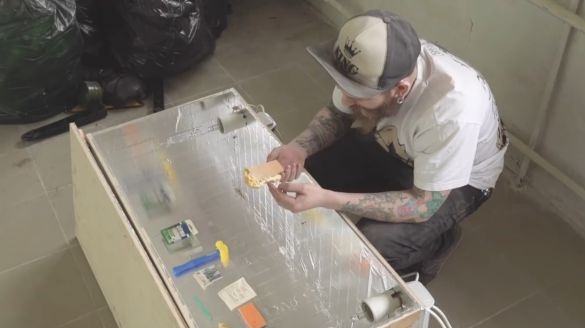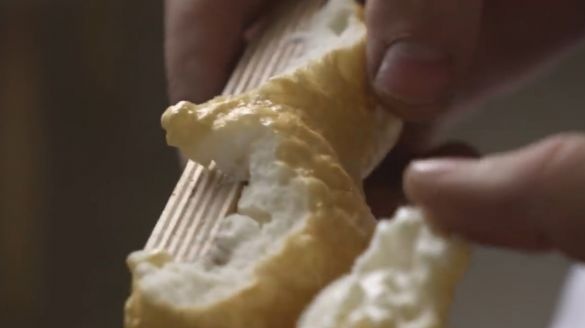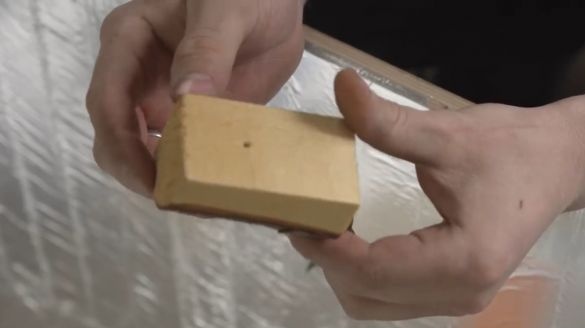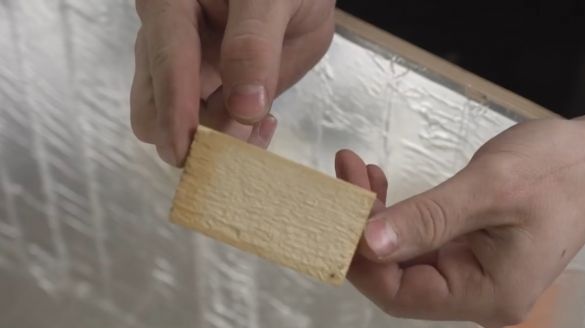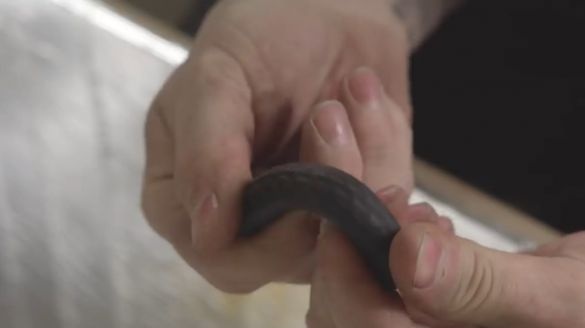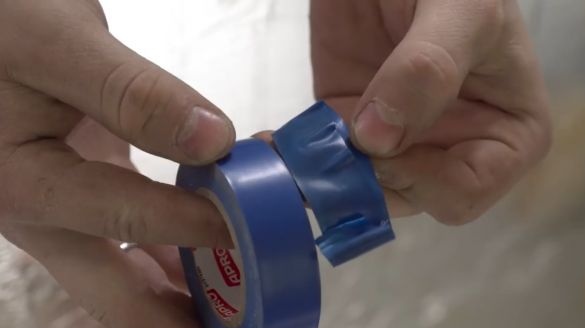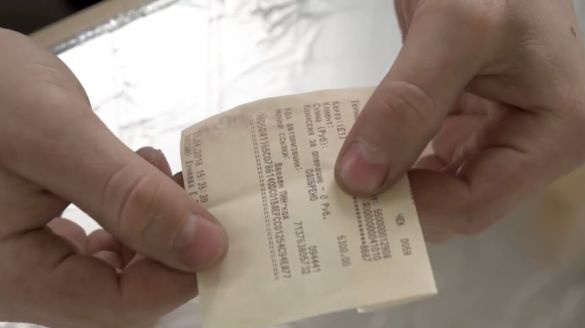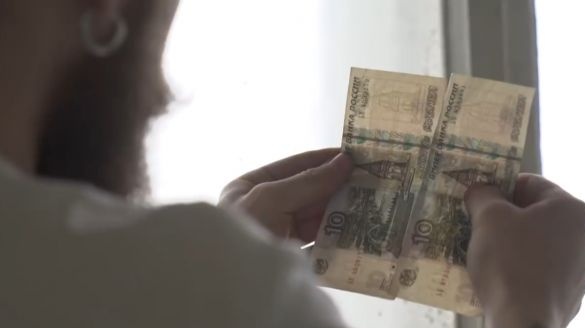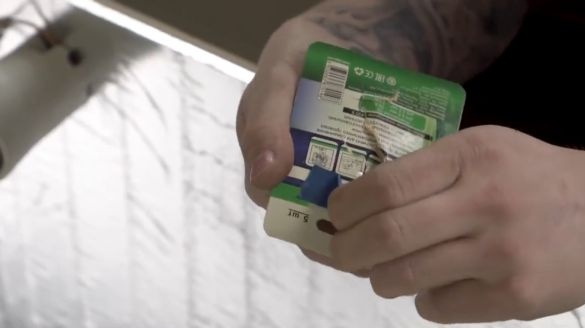Today we are going to make an aging agent - a box with superhard ultraviolet radiation, which will allow things to age and even people.
And it all starts with a simple layout of plywood. Plywood is a suitable material not only for all kinds of cases and cabinets, but also for elements of mechanics. Now we need to make a box of a normal size, in which there will be pieces for ultraviolet irradiation.
The ultraviolet spectrum of solar radiation can not only brown your skin on all sorts of seas and seas, it can also cause pigmentation and even skin cancer. The amount that can fly through the earth’s atmosphere does not affect the skin so hard, although this largely depends on where you are located on the earth. But a homemade source of ultraviolet radiation in a meter from some colorful packaging should gobble it up in a matter of hours. Many saw, probably, faded banners, on which there was only some kind of blue color and a package of chips, the color similar to ashes. The author decided to assemble such an aggregate in which this process can be recreated. Yes, there are still such factors as weathering, freezing and thawing cycles, participating, for example, in the destruction of wood and coatings. There is also a temperature effect on sunny days, when you can fry fried eggs on dark paint, or humidity itself. But at the moment we are interested in precisely the effect of rays - the actual aging of the material at the molecular level.
And so that the box itself does not die during exposure to radiation, it is necessary to cover its walls with a reflector that will reflect ultraviolet light and will not crumble in the process. For this, an ordinary aluminum scotch tape, which people like to wind up the ventilation system, is suitable.
We glue all the internal planes and collect the box.
We got to the electricity. The author used a lamp DRT1000. It works on the same principle as luminescent, but only here on its walls there is no phosphor that glows with its usual white color. Both in the DRT lamp and in fluorescent lamps, mercury vapor flies inside, through which the arc passes and all this emits ultraviolet radiation. So, DRT spits out just the UV spectrum, quartzing there and many more all kinds of applications.To connect, you need a choke to limit the current to 7.3 amperes and a pair of capacitors to ignite and maintain the glow. Let's turn on according to a fairly simple scheme, which you can also find on the Internet by request: connecting a DRT lamp.
The circuit has a button that opens the current flow through the starting capacitor. After the lamp is ignited, it must be released. Before use, the lamp itself must be thoroughly wiped with some compound that will wash greasy fingers off the glass.
We transfer all the switching closer to the box and connect the prototype.
Something is not working. But it does not work because, in addition to the starting capacitor, it has such a thing as an igniting electrode located on top of the glass. Through a small capacitor, we connect it to one of the contacts of the lamp, and the electrode itself, in fact one core of the PVA cable, is wound around the lamp in 3-4 turns.
The radiation that comes from such a lamp can not only disinfect rooms and kill fungus and mold, it can also throw moles to you and generally cure skin cancer. It is wildly powerful, so you can not look at it without glasses and avoid open skin contact. This is essentially the UV spectrum that flies in space. Only now the lamp refused to work normally. The voltage drops to 80V and goes out in about 15 seconds.
Find out what kind of sorcerer's machinations are and how the author did not fix it. There is a more affordable way. DRT lamps no longer let them out; you will not find them, of course, if the grandfather didn’t take them out of the factory at one time, but these two pieces are in every street lamp.
To start them, you also need a choke to lower the current. There are connection schemes on the Internet through a cascade of ordinary incandescent lamps, but we do not need this, because it is planned to leave the lamp for a couple of tens of hours, why in vain burn electricity. Unlike DRT lamps, DRL lamps only need a choke to start. We throw the ballast sequentially to phase or 0 and connect the base, it is more than home lamps, not e27, but e40.
Let's run to check.
Brightly. At first, some yellow-red gradients are visible, and when it lights up it shines so that without glasses, eyes will leak. Magic, and only. Okay, it’s shining, it’s shining, but we need ultraviolet. To do this, wrap the lamp in a rag and break it closer to the base.
The contents of the flask are wildly harmful, so the author does not recommend repeating this. According to the idea, mercury vapor in the inner flask, but breathing in the phosphor is such a joy.
Carefully remove the base with the inner flask, and throw out the outer one. We repeat the same with the second. These lamps are 400W each, they will be a good replacement for one DRT. We bite off the rest of the glass on the cartridge so that it does not stick out in vain.
So we have two flasks with mercury, let's check out what they can. First, wipe the surface so that nothing is sintered in the presence of oxygen. We connect through the inductor and turn on the network.
For commuting chokes with wiring and lamps to the box and you can test.
Now is the time to test all kinds of materials. Check how much money burns out in the sun, a plastic pen, a check, cardboard packaging, pieces of silicone and rubber tubes, moss, electrical tape, a piece of pine wood and foam.
According to our estimates, one year in the sun, taking into account approximately 1/3 of the sunny days in a year, is equal to 40 hours in an old-timer. All this is approximately, considering that one kilowatt of an ultraviolet lamp gives 100 W of ultraviolet radiation, and the sun gives 1.3 mW of ultraviolet radiation per square centimeter.
The author put the agitator in a clean workshop, and opened a window there so as not to breathe ozone, which is produced in large quantities by the operation of ultraviolet lamps. All experimental pieces in the chamber can be turned on.
The materials lay in the chamber for about 15 hours and this is what happened to the samples.Let's take, perhaps, the most obvious thing that catches your eye - polyurethane foam.
Everyone probably saw orange pieces sticking out of the joints of windows and doors in the sun. It turned yellow in 15 hours and the surface began to crumble. It is not for nothing that the lifetime of the assembly foam in the region of 4 years, then it simply turns into dust. Then we look at what happened to the piece of wood.
She, too, was reddened on all sides and turned yellow, as if prepared, and now she can be harassed. It is possible that if you periodically water it and leave it for 60 hours, you can achieve a gray color of a piece of wood lying on the street. There are of course methods and easier, but this one will be the actual aging.
Also, the author wanted to check how UV will affect rubber hoses, but apparently, for the rubber to dry out, the same moisture is needed and much more time, several years, probably, or 100 hours in a box. In general, the changes are not visible.
With a rubber ring the same picture, nothing has changed.
But the electrical tape behaved exactly as expected, turned into an old shovel. It became darker, and the adhesive part, which was under the rays, ceased to stick at all.
The check burned out quite a bit, despite the fact that it actually became six months older if you did not look at the date of purchase.
The bill did not change at all, when compared with another bill. In theory, special paints are made for this, so that the money is in circulation for longer and does not deteriorate.
The packaging began to show its age, all white parts turned yellow, and the colored ones began to fade. As in the case of a piece of wood, cellulose turned yellow and began to break down at the molecular level.
As a result, we got a box in which you can test the materials, checking how they will change under atmospheric conditions, how the colors in the sun, lacquered coatings will behave, what will happen to the material itself. Such things will be useful for those who are engaged, for example, in outdoor advertising or car service, in order to choose the best vinyl for their work.
Thank you for attention. See you soon!
Video:

